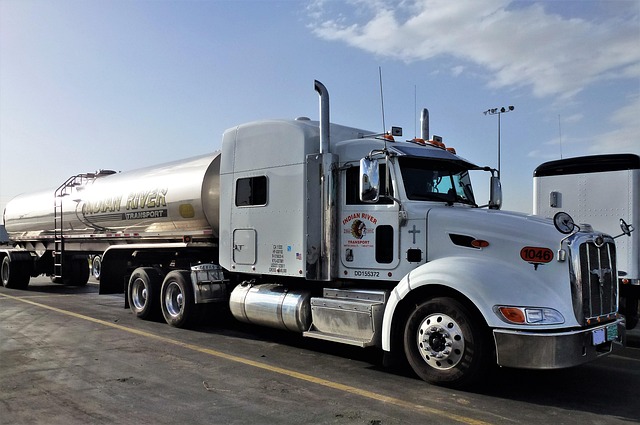Looking to register your car in California? This comprehensive guide walks you through every step, from understanding eligibility requirements to completing registration. First, ensure your vehicle meets state standards with a simple DMV VIN verifier. Gather essential documents like proof of ownership and insurance. Then, visit the California DMV or apply online, providing accurate details for verification. Once approved, finish the process by paying fees and securing your vehicle’s official registration.
- Understand Eligibility Requirements for Car Registration
- Gather Necessary Documents for California DMV
- Perform Vehicle Identification Number (VIN) Verification
- Visit or Apply Online at California DMV
- Complete Registration and Pay Fees
Understand Eligibility Requirements for Car Registration

Before you begin the registration process, it’s crucial to understand the eligibility requirements set by the California Department of Motor Vehicles (DMV). To register your car in California, your vehicle must meet specific criteria. One key step is ensuring that your car has a valid and accurate Vehicle Identification Number (VIN) inspection. This can be done through a DMV vin verifier or a mobile vin verifier service, which checks the VIN against national databases to verify its authenticity.
Additionally, your car must pass an emissions test, unless it’s a model year 1975 or older. For vehicles manufactured after 1964, you’ll need a current safety and emissions inspection certificate. It’s also important to have proof of insurance and the necessary registration fees. A mobile vin verification or vin inspection service can streamline this process by providing immediate results, making it easier for you to navigate the registration requirements efficiently.
Gather Necessary Documents for California DMV

Before registering your car with the California Department of Motor Vehicles (DMV), ensure you have all the required documents. One essential item is a valid Vehicle Identification Number (VIN) verifier, which can be obtained through a mobile VIN verifier service or by conducting a vin inspection. This unique 17-character code is crucial for identifying your vehicle and verifying its history.
Additionally, gather important paperwork such as proof of ownership, a completed DMV registration form, current registration documents from your previous state (if applicable), and valid identification like a driver’s license or passport. Some documents may be available through digital means, but others require physical copies, so be prepared accordingly when visiting the DMV or using their services.
Perform Vehicle Identification Number (VIN) Verification

Before you begin the registration process, it’s crucial to perform a Vehicle Identification Number (VIN) verification. This step is essential as it confirms the vehicle’s authenticity and history, which is vital for ensuring both road safety and consumer protection. You can conduct this verification through a mobile vin inspection or by utilizing the services of a dmv vin verifier.
A mobile vin inspection allows you to check your car’s VIN against state databases remotely, offering convenience and saving time. Alternatively, a vin inspection at the DMV is also an option, where their professionals will carry out a thorough verification of your vehicle’s details, including its title history, accident records, and any outstanding recalls, ensuring it’s safe and legal to register.
Visit or Apply Online at California DMV

Visiting or applying online at the California DMV is a convenient way to start the car registration process. The Department of Motor Vehicles (DMV) offers several services, including vehicle registration and title transactions, through their physical offices and digital platforms. When registering a car in California, one of the initial steps involves verifying the Vehicle Identification Number (VIN). The DMV provides a VIN verifier tool that allows you to check your car’s history and ensure it meets all legal requirements before completing the registration.
Using the official DMV website or mobile app for a mobile vin inspection is an efficient method. You simply input your VIN, and the system will display crucial information about the vehicle’s past, including ownership changes, accident records, and maintenance histories. This data is essential in determining if the car is safe to register and meets California’s standards. With these digital tools, you can streamline the registration process, saving time and effort compared to traditional methods.
Complete Registration and Pay Fees

After gathering all the necessary documents, it’s time to complete the registration process with the California DMV (Department of Motor Vehicles). The next step involves filling out the registration form and submitting it along with your vehicle’s title and any required fees. One crucial part of this process is ensuring the Vehicle Identification Number (VIN) is accurately verified. You can do this using a DMV VIN verifier, either online or through their mobile app, which provides an easy and efficient way to check the vehicle’s history.
This verification process is essential as it helps ensure that your car has not been reported stolen or has any outstanding issues. It’s recommended to opt for a mobile VIN verification service, allowing you to quickly cross-check the VIN details with the DMV database from the comfort of your home or even while at the registration center. This step will help streamline the registration and ensure a smooth transition into California’s vehicle ownership regulations.
Registering a car in California is a straightforward process once you understand the requirements and have all the necessary documents. By completing steps such as VIN verification using a trusted DMV VIN verifier, and applying at the California DMV either in-person or online, you can ensure a smooth registration experience. Remember to keep your vehicle’s paperwork up-to-date to avoid any legal issues down the road.
